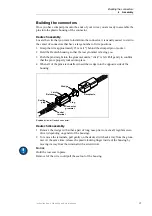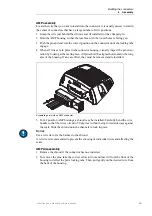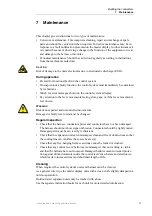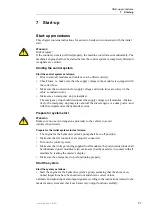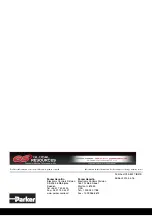
17
Building the connectors
7 Maintenance
Instruction book, Mounting and maintenance
7
Maintenance
This chapter gives instructions for two types of maintenance:
•
Corrective maintenance. This comprises cleaning, repair and exchange of spare
parts and should be carried out when required. Corrective maintenance may be in
response to a fault notification presented on the master display. In other instances it
is required because of observing a change in the function of the equipment or wear
and damage to the harness or modules.
•
Periodical maintenance. Should be carried out regularly according to instructions
from the machine manufacturer.
C
AUTION
Risk of damage to the units' electronics due to electrostatic discharge (ESD).
During operation
•
Be alert for functional faults in the control system.
•
On suspicion of a faulty function, the control system must immediately be examined
by technicians.
•
Watch for error messages shown on the control system's display.
•
Pay attention to the lever movements feeling slow, gaps, or if the lever movements
feel uneven.
W
ARNING
Risk of unexpected and uncontrolled movements.
Damaged or faulty lever units must be changed.
Regular inspection
•
Check that the harness, conductor splices and connectors have not been damaged.
The harness should not show signs of abrasion. Connectors should be tightly mated.
Damaged parts must be serviced by technicians.
•
Check that the expansion units are undamaged, clean and free of obstructions so that
the cooling fins can ventilate the excess heat away.
•
Check that any free-hanging harness sections cannot be folded or crushed.
•
Check that any control levers' bellows are undamaged, that no cracking is visible
and that the bellows have not loosened. Damaged bellows mean worsened protec-
tion against dirt and moisture inside the control lever's mechanics and electronics,
which leads to increased wear and shortened length of life.
Cleaning
When required, the control system's units and harness must be cleaned.
As a general rule, wipe the master display units with a clean cloth, slightly damped in a
mild soap solution.
Outdoor rated expansion units may be washed with a hose.
See the separate instruction books for each unit for more detailed information.













